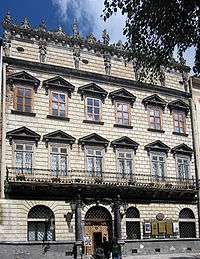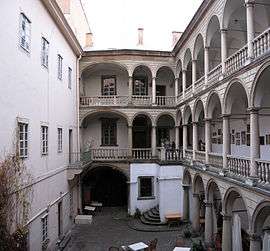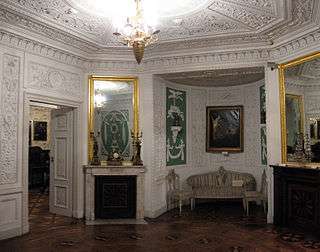Korniakt Palace
The Korniakt Palace (Ukrainian: Палац Корнякта (Palats Korniakta), Polish: kamienica Królewska we Lwowie) on Market Square in Lviv is a prime example of the royal kamienica, or townhouse. The fabric of the palace is of various dates. It was originally built by Polish architect Piotr Barbon for merchant Konstanty Korniakt, a champion of Greek Orthodoxy and co-founder of the Lviv Dormition Brotherhood. Construction of this severely elegant Renaissance palazzo was completed in 1580.
After Korniakt's death in 1603, King Władysław IV Vasa stayed at his palace. He got smallpox and recovered here. In 1640, the edifice was purchased by Jakub Sobieski and was later inherited by his son, King John III Sobieski. The Polish-Lithuanian ruler remodelled it into a palatial residence, with spacious rooms and an audience hall where he signed the Eternal Peace Treaty of 1686.
In 1908, the Sobieski Palace became home to the Jan III museum. It is now part of the Lviv History Museum. The royal chambers are used for exhibiting Rococo furniture and clocks, a collection of medallions, and precious silverware.
 |
 |
 | ||
| Jan Sobieski's residence in Lviv | The Italian Courtyard | The audience hall |
See also
| Wikimedia Commons has media related to Korniakt Palace. |
References
- Вуйцик В. С., Липка Р. М. Зустріч зі Львовом. Львів: Каменяр, 1987. С. 50.
- Памятники градостроительства и архитектуры Украинской ССР. Киев: Будивельник, 1983—1986. Том 3, с. 42.
Coordinates: 49°50′32″N 24°01′59″E / 49.84225°N 24.03300°E
